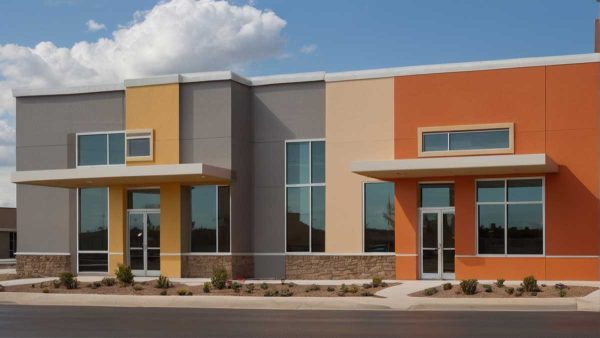EIFS vs. traditional stucco: pros and cons

When it comes to choosing the right exterior finish for a building, the debate often narrows down to two popular choices: Exterior Insulation and Finish Systems (EIFS) and traditional stucco. Both have their unique advantages and drawbacks, making the decision critical for architects, builders, and property owners. This blog provides a comprehensive comparison of EIFS and traditional stucco, helping you understand which option best aligns with your building’s needs.
Understanding EIFS and traditional stucco
EIFS are multilayered systems that offer excellent insulation and a range of aesthetic finishes. They consist of an insulation board attached to the building’s exterior, covered by a base coat, reinforcement mesh, and a finish coat. Traditional stucco, on the other hand, is a hard, dense, cement-based coating applied in several layers over a wire or wood lath.
Pros of EIFS
- Superior Insulation: EIFS provides outstanding thermal insulation, enhancing energy efficiency.
- Design Versatility: Available in various textures and colors, EIFS offers greater design flexibility.
- Weight: EIFS is lightweight, reducing the load on the building structure.
Cons of EIFS
- Moisture Sensitivity: Improper installation of EIFS can lead to moisture-related issues.
- Perceived Durability: There’s a perception that EIFS is less durable than traditional stucco, although modern EIFS have significantly improved in quality.
- Cost: EIFS can be more expensive upfront due to their complex installation process.
Pros of traditional stucco
- Durability: Traditional stucco is known for its toughness and resistance to impact.
- Time-tested: As a traditional material, stucco has a long history of use and a proven track record.
- Maintenance: Once properly installed, stucco requires minimal maintenance.
Cons of traditional stucco
- Insulation: Traditional stucco lacks the insulation properties of EIFS.
- Design Flexibility: Stucco offers limited options in terms of finishes and textures compared to EIFS.
- Installation Sensitivity: Like EIFS, improper installation can lead to cracks and moisture penetration.
Making the right choice for Your building
The decision between EIFS and traditional stucco depends on several factors, including climate, architectural design, budget, and energy efficiency requirements. While EIFS offers better insulation and design versatility, traditional stucco stands out for its durability and historical appeal.
Both EIFS and traditional stucco have their places in the construction industry. EIFS is suited for projects where energy efficiency and design flexibility are priorities, while traditional stucco is ideal for those who prefer durability and a classic look. Understanding the pros and cons of each can guide architects, builders, and property owners in making an informed decision that balances aesthetics and functionality.
